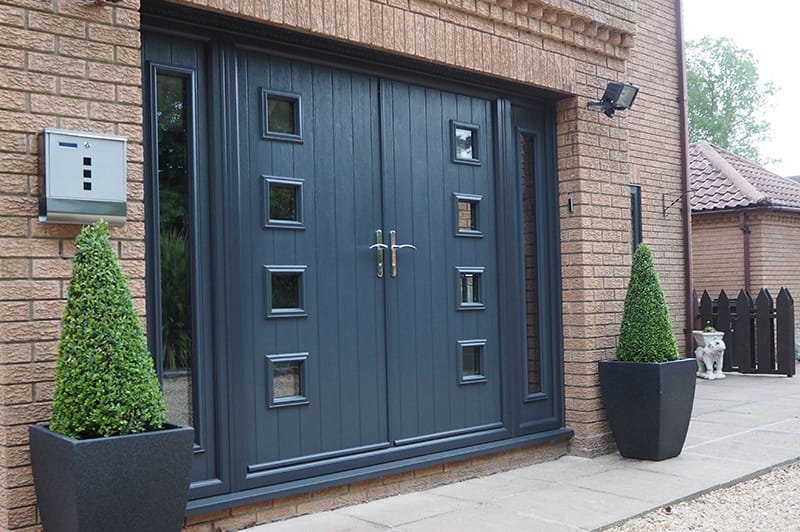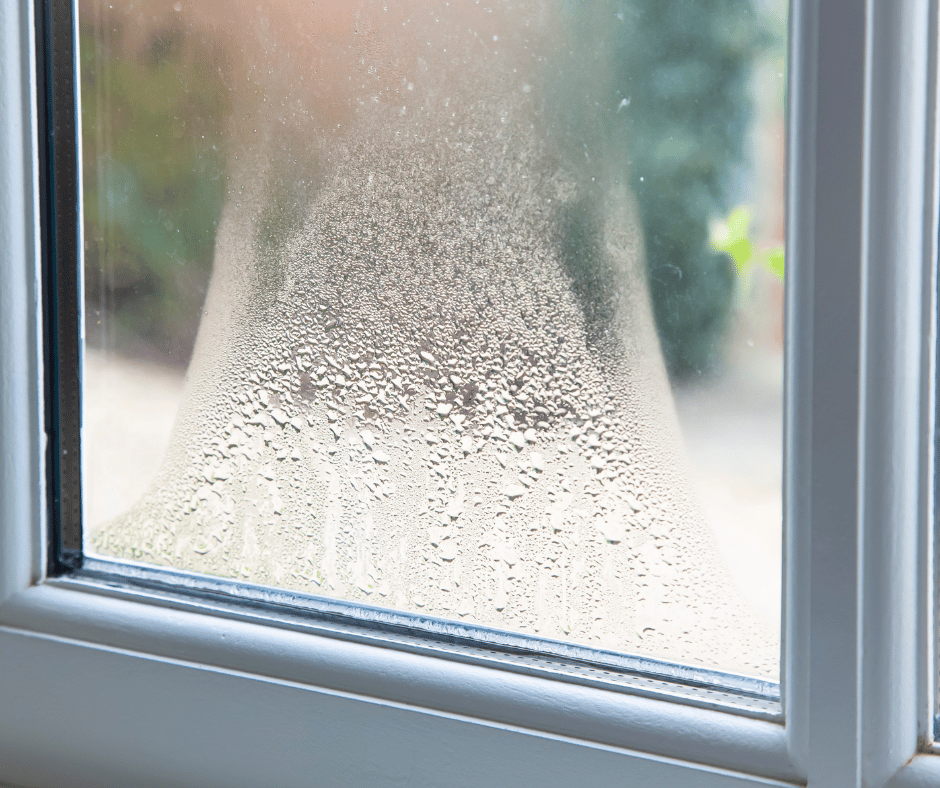Choosing a front door for your home is about more than how good it looks (although that is an important factor too!). Your front door needs to be effective at securing your home, providing a barrier to the outdoors, and helping you improve energy efficiency.
If you’re wondering how your front door can help you conserve energy and play a part in lowering your household bills, read on. In this article, our expert team at Celestial are running down the best front doors for insulation – to help you make an informed decision.
Types of front doors
In the UK, there are five main types of front doors. Each front door comes with different properties and benefits, so knowing what types of front doors are available and how they will work with your home can help you pick the right front door for your home.
The five main types of front doors include;
- Composite doors
- Aluminium composite doors
- Wooden doors
- Panel doors
- uPVC doors
Composite Doors
Composite doors are a popular choice for homeowners looking for a blend of durability, security, and energy efficiency. Made from a combination of materials such as wood, PVC, insulating foam, and glass reinforced plastic (GRP).
Composite doors offer excellent insulation properties, helping to keep your home warm in the winter and cool in the summer. They come in a variety of styles and finishes, allowing you to find the perfect door to complement your home’s aesthetic.
Discover more in our post “what is a composite door” to help you decide if this kind of door is right for your property.
Aluminium Composite Doors
Aluminium composite doors are known for their sleek and modern appearance, making them a stylish option for contemporary homes. These doors combine the strength and durability of aluminium with the insulating properties of other materials, providing excellent thermal efficiency. With their robust construction, aluminium composite doors offer enhanced security, giving you peace of mind that your home is well-protected.
Wooden Doors
Wooden doors have timeless appeal and add a touch of warmth and character to any home. They are available in a range of hardwoods and softwoods, each with its own unique grain and texture.
Wooden doors offer good insulation properties, although they may require more maintenance compared to other materials to keep them looking their best. With proper care, however, wooden doors can last for many years and provide a classic entrance to your home.
Panel Doors
Panel doors are a traditional choice for front entrances and are characterized by their classic design featuring raised or recessed panels. These doors are typically made from wood or composite materials and offer good insulation properties.
Panel doors come in various designs, from simple and understated to more ornate and decorative, allowing you to choose a style that suits your home’s architecture and your personal taste.
uPVC Doors
uPVC doors are a practical and affordable option for homeowners seeking energy-efficient front doors. Made from unplasticized polyvinyl chloride, these doors are highly durable, weather-resistant, and low-maintenance.
uPVC doors offer good insulation properties, helping to reduce heat loss and lower energy bills. They come in a range of styles and colours, making it easy to find a uPVC door that complements your home’s exterior.
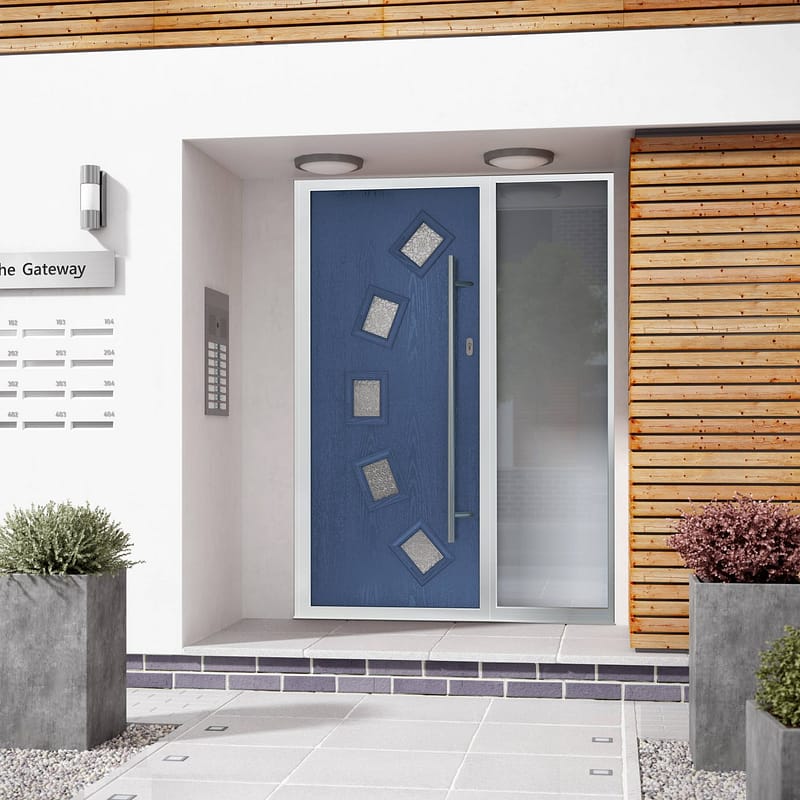
Factors to consider when choosing front doors
When choosing your front door, you have a few considerations you need to think about before committing to whichever type you buy. In the first instance, you need to decide on the look and style of the door and the impression you want to make. This might automatically rule out some choices for you.
Next, you need to consider the security levels of the door and the type of security you want. When it comes to front door security, all doors, at a minimum, must meet British Standard PAS24; however, insurance companies will specify that your external doors meet British Standard 3621. You can talk to your supplier about the door’s security to determine what standards it meets.
Energy efficiency should also play a part in your decision to purchase a new front door. The last thing you want is for your door to leak heat and let in excess air from outside. This will increase your energy bills and cause you no end of issues when heating your home. This is why it’s important to know how to insulate a front door. Or to get an expert (like us) to do it for you.
All UK doors are assigned a U value, and this value determines the energy efficiency, much like you would see on household appliances. Lower U values mean increased energy efficiency, and all doors are rated on a scale from A++ to E, with E being the lowest rating and reduced energy efficiency.
Energy-efficient front doors
All front doors will offer you some level of energy efficiency; however, aluminium doors are more energy efficient than wooden or uPVC doors. However, the best doors for insulation that come out on top when considering energy efficiency are composite front doors, which is down to the manufacturing process and the materials used to create the door.
However, if you have glass panels in your front door, they need to have at least the same energy rating as your windows to help you achieve maximum efficiency.
Benefits of insulating your home with a front door
Insulating your home through your front door offers an array of compelling benefits that go beyond just energy savings. Here’s a closer look at some of the key advantages:
- Energy Efficiency: Effective insulation in your front door acts as a barrier against heat transfer, reducing the need for constant heating during colder months. This results in substantial energy savings as your heating system operates more efficiently. By retaining warmth within your home, you’ll notice a significant decrease in your energy bills over time.
- Enhanced Comfort: Proper insulation not only keeps your home warmer in winter but also helps maintain a comfortable indoor temperature throughout the year. With a well-insulated front door, you can say goodbye to chilly draughts that often sneak in through gaps and cracks, providing a cosier living environment for you and your family.
- Noise Reduction: Beyond thermal insulation, a properly sealed front door can also contribute to a quieter indoor environment by blocking out external noises. Whether it’s traffic sounds, neighbourhood chatter, or loud disturbances, investing in insulation ensures a more peaceful atmosphere inside your home, promoting relaxation and tranquillity.
- Improved Durability: Insulation not only regulates temperature but also helps protect your front door from damage caused by external elements. By preventing moisture ingress and temperature fluctuations, insulation can extend the lifespan of your door, reducing the need for frequent repairs or replacements, thus saving you money in the long run.
- Enhanced Security: A well-insulated front door often comes with additional security features, such as reinforced frames and multi-point locking systems. These enhancements not only provide better insulation but also bolster the security of your home, offering peace of mind against potential intruders.
- Pest Prevention: Insulation acts as a barrier not only against the elements but also against unwanted pests and insects. A properly sealed front door eliminates gaps through which pests could enter your home, reducing the risk of infestations and ensuring a cleaner, healthier living environment.
- Aesthetic Appeal: Modern insulation materials and techniques offer a wide range of design options, allowing you to enhance the visual appeal of your front door while improving its functionality. Whether you prefer a traditional or contemporary style, there are numerous insulation solutions available to complement your home’s aesthetics.
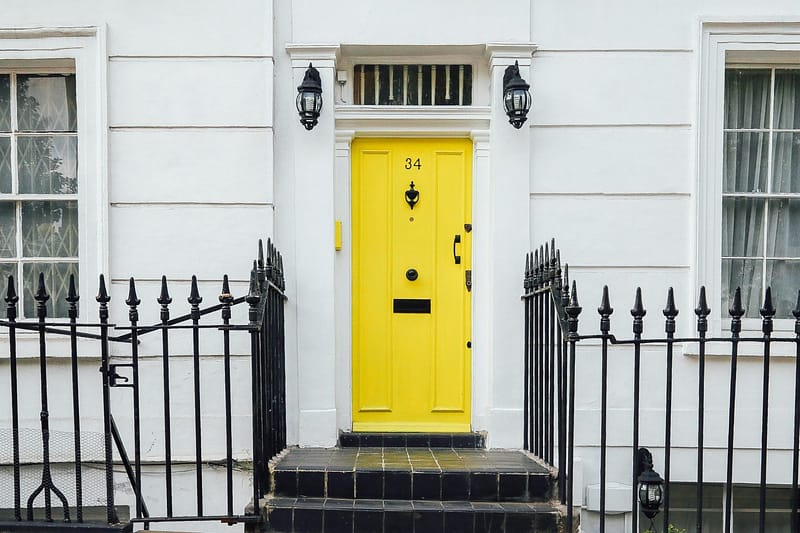
How to install front doors properly
When fitting a new front door, you need to know how to fit it properly, or you won’t get any of the energy efficiency or security benefits, and it likely won’t open and close as you need it to.
If you’re fitting the door yourself, then you need to follow these directions.
- Measure and then measure again to be sure you have the correct measurements.
- Resize if necessary for a wooden door.
- Hold the door in the frame and check it fits flush.
- Mark the hinge positions on the door frame
- Hold the door at a 90-degree angle to the frame.
- Screw the hinges into the door.
- Fit the handles and lock.
Of course, if you want to save the hassle and headaches of fitting your new front door yourself, Celestial can help. When you buy any door from us, we can also deliver and fit it for you. If there are any problems we’ll make sure to get out to you ASAP to get these resolved.
Maintenance tips for front doors
Keeping your new front door clean and well-maintained will help you avoid missing any damage or other issues that impact energy efficiency, such as loose window panels or faulty handles and locks.
Most front doors are low maintenance and will typically only need a gentle wash frequently to remove dirt. Cleaning your front door will allow you to check for damage on the door itself, as well as the handle hinges and any fittings or additional locks you have installed.
This is true for uPVC and composite front doors. However, wooden doors might need some extra TLC such as resealing to keep them looking good and secure.
You might also need to replace hinges as required if they start to show signs of damage.
Front door trends to consider for your home
Front door trends will impact the aesthetics of your door and can be another factor to look at when choosing the best font door for energy efficiency. A few trends that are popular right now include;
- Bright colours
- Natural materials
- Glazing in various styles
- Smart technology
- Customised doors
- Full height doors
You can check out more design ideas for your front door in our dedicated guide.
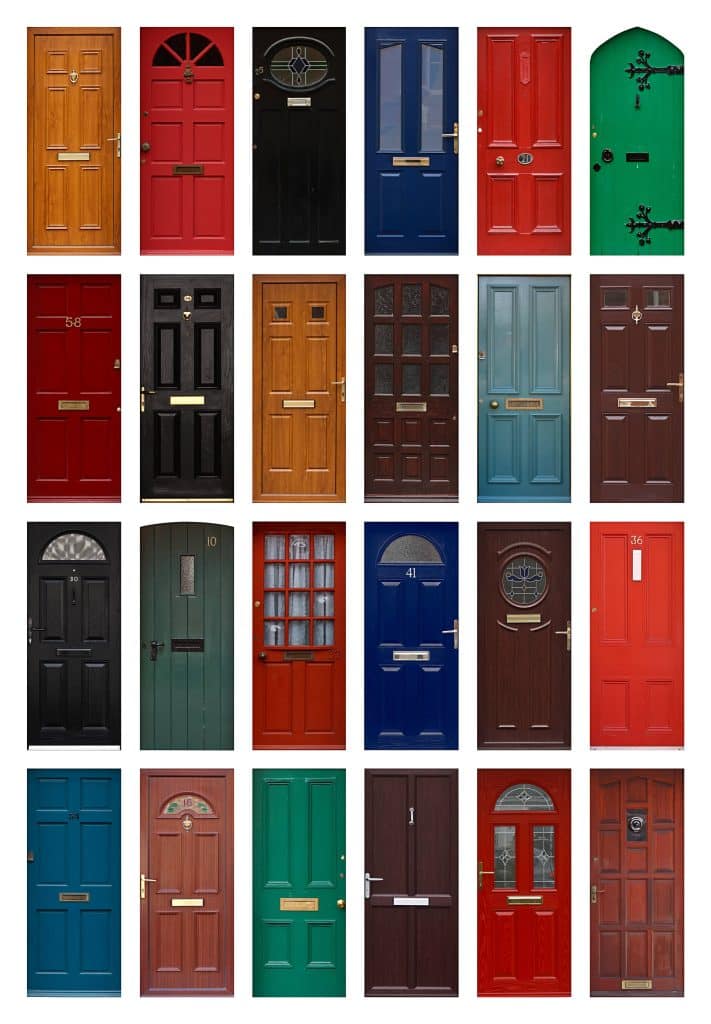
Cost-effective options for insulating your home
While choosing the best front doors for insulation will give you increased energy efficiency, they will work better when utilised alongside other energy-efficient choices and changes you make around your home. If you’re looking for ways to reduce your energy consumption, these tips can help.
- Choose double or triple glazing if your windows need replacing, and ensure the glazing in your new front door meets the same standards, too.
- Use draft excluders around areas where there are air leaks, for example, on both internal and external doors or on window sills, to block drafts.
- Check sealant around windows and doors to reduce air escaping.
- Insulate pipework
- Hang curtains on external doors.
- Use rugs on hard flooring to absorb heat and stop it from escaping through the flooring.
If you’re looking for the best front doors for insulation, choosing aluminium or composite doors can offer you the best energy efficiency levels; however, knowing the rating to look for to benefit from increased efficiency, low U values, will help you, as will knowing what the door is made of and even your home’s current efficiency level too. Our experts will be able to help you discuss the correct type of door for your home and desire that your new front door meets your needs.
How We Can Help
We’ve summarised the best front doors for insulation in this post. If you’re wanting more information about a specific door type, get in touch with us with any questions you might have. If you want to see these doors in person, visit our North East Doors showroom, located in Middlesbrough. Our friendly team can show you the wide range of front doors we supply including Bi-Folding, French Doors, Composite Doors and more.
Whether you know exactly what type of door you want, or need more information on which front door will insulate your house the best, our team are on hand to help you make the right decision.

